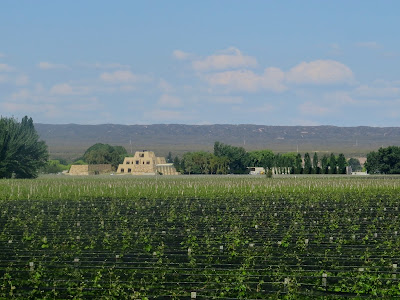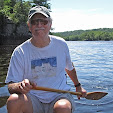Perfect! It’s the best of both worlds for me; I’m a senior citizen who, I’m told, often acts like a three-year-old.
~ // ~ // ~
 My
roots are a typical American melting-pot amalgam: a little English, a
bit of Italian…but mostly German. My family celebrates that heritage in a
well-documented trove of family lore and with a few fine decorative and
artistic German heirlooms handed down through the generations.
My
roots are a typical American melting-pot amalgam: a little English, a
bit of Italian…but mostly German. My family celebrates that heritage in a
well-documented trove of family lore and with a few fine decorative and
artistic German heirlooms handed down through the generations.So, naturally, when I faced the choice of either French or German as my foreign language in high school, I went with the deutsch. Never gave it a second thought.
None of it fit my
romantic image of myself as a Mexican
fisherman in a previous life.
AN EPIPHANY
Flash forward to about 2002. It was then, at the age of 57, during one of my several identity crises, that I decided I hated German. Truth be told, I’d never liked the hard, guttural sound of it. I didn’t much care for some of the national characteristics it conjured up for me either. None of it fit my romantic image of myself as a Mexican fisherman in a previous life.
Besides, it was becoming quite clear that I might never even visit Germany. But I had been traveling to Mexico, with my parents when I was nine, and a couple of times with friends as an adult. Then I got married, and Sally and I continued the trend, spring-breaking in nearly all of the popular Mexican beach towns.
I think it was Mazatlán where the epiphany happened. As I usually do, I’d boned up on a few basic pleasantries in Spanish so I could be a more gracious visitor, a better representative of my own country.
But on this one short cab ride, when it came time to pay the fare, the limit of my competence in the language came up and bit me. For some reason, cien (a hundred) and diez (ten) switched places in my brain, and I was convinced the driver had stiffed me.
 He
explained with patience I didn’t deserve. Red-faced, I apologized and
handed him the pesos…and a little extra for the painful lesson. And it
was at that precise moment that the trajectory of my late-in-life quest
for Spanish literacy took off.
He
explained with patience I didn’t deserve. Red-faced, I apologized and
handed him the pesos…and a little extra for the painful lesson. And it
was at that precise moment that the trajectory of my late-in-life quest
for Spanish literacy took off.IMMERSION IS THE KEY
Next time in Mexico, I decided, I’ll be able to carry on at least a simple “How’re the wife and kids?” conversation with a cab driver—and be able to correctly count my change. Those were my goals.
So I signed up for a St. Paul Public Schools Community Ed. class: Spanish for Beginners. My teacher was Silverio Rios, an engaging 40-something Mexican who’d been living and working in the Twin Cities for several years.
One evening after class I asked Silverio to join me for coffee and we chatted a bit about my goals for learning his first language. Toward the end of that first get-together, he told me of his plans to take small groups of his students on week-long Spanish immersion trips down to the part of central Mexico where he’d grown up.
That idea captivated me, and, as I was then a graphic designer, I offered to design and write his brochure for him. He accepted, offering in exchange a spot on his inaugural trip.
And so, Voces del Español was born. In August 2003, Silverio, I and three other students flew to Mexico City, then bussed to Querétaro City, and finally rented a car for the drive to the charming little town of Tequisquiápan, which would serve as our home base for the week.
The format involved formal classes in the mornings and an excursion each afternoon. Silverio had designed all the activities to encourage our use of the language in everyday experiences, such as buying produce from the local market or ordering dinner at a restaurant for everyone in our group.
Also included in those experiences was joining Silverio’s relatives for typical family events like a birthday, a wedding and going to the cemetery to tend to family graves. On different occasions we helped make bread with his mom and joined in the elaborate preparation of a mole.
WHERE LA ACCION IS
By the end of that first Voces trip, I realized my original goal of engaging in small-talk with a cab driver had already been eclipsed. Now I knew I was capable of more.
My Spanish learning was to become the theme—the key, one could say—to many more travels in Latin America. I eventually went on three more Voces immersion trips with Silverio. With each one, I gained more tools and more confidence in expressing myself. (Not to mention the great joy of being virtually adopted into his family.)
I’ve also travelled to Spain, Peru and Argentina, and attended language schools in Veracruz, Mexico, Panama and Cuba. All, if not dictated by my quest for better Spanish, at least encouraged by it.
My goal had been edging up too,
like one of those mechanical rabbits
that racing dogs chase, always just
beyond reach.
NOT LOST IN TRANSLATION
One measure of my progress has been the time lapse between when I think of something to say and when the words actually come out of my mouth. I remember quite clearly when that interval was five to ten seconds. In most of my attempts to join a conversation I was getting left behind.
 But
my competence level kept edging up, and that time interval down. At
some point I realized my goal had been edging up too, like one of those
mechanical rabbits that racing dogs chase, always just beyond reach. Now
I wasn’t going to settle for any less than holding my own in those
conversations with native speakers.
But
my competence level kept edging up, and that time interval down. At
some point I realized my goal had been edging up too, like one of those
mechanical rabbits that racing dogs chase, always just beyond reach. Now
I wasn’t going to settle for any less than holding my own in those
conversations with native speakers.I have my moments—occasionally glorified by a couple of tequilas. They’ve included many conversations with Silverio, members of his family or Spanish-speaking friends I’ve met on my own, about a range of topics from art to zoology.
Once I get going, I enter that rarified air where only the relatively fluent survive. Where my mind goes right from hearing the Spanish to replying in Spanish, without passing through an English translation.
I suppose it’s another measure of my progress that I’m now less focused on vocabulary and grammar than on the finer points, like minimizing my English accent and incorporating common filler words—the Spanish equivalents to the English “um,” “well,” “then” or “so”— into my speaking.
Yes, I’ve a ways to go, but I can definitely see the prize. It may be that I’ll never be able to actually grab it; that might take a few months living in a place where no one speaks English. Maybe in my next life.
EMPOWERMENT
It’s amazing, when traveling, what knowing the local language does for a person. For me, it’s been kind of like watching and envying a competent musician, and then, with a ton of work, being able to play myself.
My new second language opens doors—to friendships, to avoiding conflict, to finding my way around. And for Sally, it cuts through the awkwardness of her having to shop using just hand gestures.
 I
can even feel my Spanish competence affecting my posture as I walk down
the street, especially in areas where I may be the only person in that
town who looks like me. I enjoy seeing the look on a person’s face when
someone who looks so unlikely to be a Spanish speaker handles their
language so capably.
I
can even feel my Spanish competence affecting my posture as I walk down
the street, especially in areas where I may be the only person in that
town who looks like me. I enjoy seeing the look on a person’s face when
someone who looks so unlikely to be a Spanish speaker handles their
language so capably. More than once, that person has explained that they’d expected me, at best, to speak English with a heavy German accent.
~ // ~ // ~
POSTSCRIPT: My dad, at about the same age I was when my love affair with Spanish began, was also dreaming of learning the language. He chipped away at it, but with all his home and business responsibilities he never really got past the basics. I know that a great part of my motivation has been to honor his dream and make him proud. I believe I have.




























































